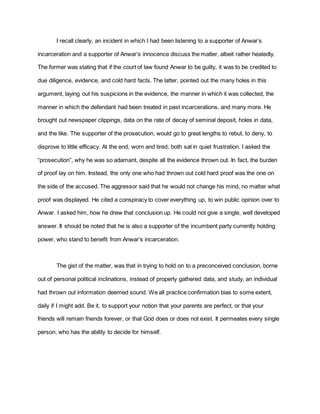This document summarizes a student's journal entry for a social psychology course. It includes:
- The student's name, student ID, course details, lecturer name, and submission date.
- A summary of the student's reflections on how social conditioning in their early educational experiences shaped their views and behaviors as a student.
- An analysis of how social perceptions, influences, and interactions formed the basis of their social conditioning.
![SCHOOL OF ARCHITECTURE, BUILDING AND DESIGN
FOUNDATION IN NATURAL & BUILT ENVIRONMENT
NAME: DANIEL SONG CHENG HOCK
STUDENT ID NO: 0320155
SOCIAL PSYCHOLOGY [PSYC0103]
GROUP: MONDAY 4-6pm
FOUNDATION IN NATURAL & BUILT ENVIRONMENT
JOURNAL ASSIGNMENT 1
LECTURER: T. SHANKAR
SUBMISSION DATE: 27/APRIL/2015](https://image.slidesharecdn.com/psychjournal1-150624111735-lva1-app6891/85/Psych-journal1-1-320.jpg)


















